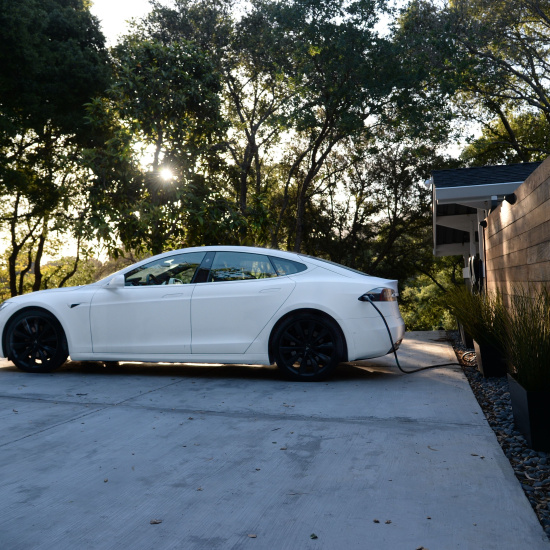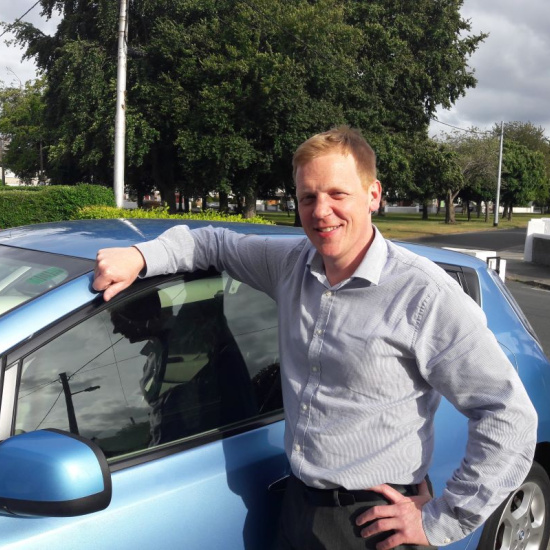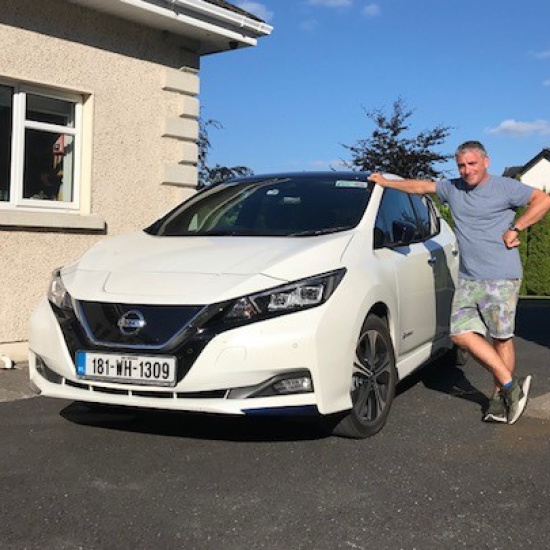Electric Vehicle Charging Essentials - Part 3
New to driving electric or planning to make the switch to an EV soon? We share all the essential information you need to know about charging your EV.
In this three-part series, we share everything you need to know about charging an electric vehicle. We often hear feedback and comments from people that charging can be a hurdle in the switch to electric. The how, when, where and the time it takes to charge an electric vehicle can be a bit intimidating! We will take you through the different ways you can charge an EV, the convenience of it and the support you will have on your EV journey.
Charging an Electric Vehicle (EV) - En Route Motorway Charging
In our blog 'Neighbourhood and Destination charging' many of the solutions utilise local fast chargers. In this piece, we'll take the opportunity to examine fast chargers in more detail. We will cover locations, the technology, the cost, and how they allow you to criss-cross the country without tailpipe emissions and minimal delay.
What is a Fast Charger
'Fast Charger' is the term often used to describe the DC (Direct Current) chargers in Ireland capable of delivering 25kW and above. You may also see the term 'High Powered Charger' (HPC); this refers to chargers capable of delivering 100kW and above. These DC powered fast chargers all have their own attached (tethered) charging cable. Once you've activated the charger with your charging card, or, in some cases, a bank card, then you simply plug the cable into your EVs Combined Charging System (CCS) or CHAdeMO fast charging socket. Charging will begin when it is connected correctly. Chargers are provided by several operators such as ESB Ecars, Ionity, Applegreen, Circle K, EasyGo, Tesla and many more and each charge point will be labelled with specific directions for use.
Standard Charger Ports
Know the different charging ports for AC and DC

Type 2 Port
For AC charging, a Type 2 port and cable are used. This is the cable supplied with the EV.

Combined Charging System Port
For DC charging, a CCS port is used, built into the Type 2 port. The cable required will be attached to the charger.

CHAdeMo Port
Some early EV models use a CHAdeMO port for DC Charging, located next to the Type 2 port. The cable will be attached to the charger.
En Route Fast Charging Locations
There are many fast-charging locations across the country. Apps such as Google Maps, PlugShare or A Better Route Planner can help you identify charging locations. Several motorway junctions have multiple fast chargers, reducing the risk of arriving and having to queue. There are extensive plans in place to rapidly grow this charging network to ensure adequate charging is in place as the EV fleet size grows. This charging network combined with destination charging facilities will enable you to travel throughout the country with confidence.
Speed is of the Essence; The Tech
Each fast charger on the public network in Ireland typically has a power output between 50 and 150kW. Some are capable of over 300kW. Charging capabilities can vary among different EV models and partly determine the speed you can charge at. If your EV has a maximum charging rate of 50kW, the charger will automatically ensure charging does not exceed 50kW, even when the charging station is capable of more than that. Although bear-in-mind, 50kW chargers are often a little cheaper per kWh than High Powered Chargers. Two other factors that dictate the charging speed are, state of charge, (how full the battery is), and the charger's maximum output power.
Many EVs achieve much lower charging speeds above an 80% charge and because of this, it is rarely worthwhile to continue fast charging beyond 80%. For example, an EV with an advertised fast charging speed of 75kW will only achieve this from a charger capable of at least 75kW and when the EVs state of charge is below 80%. If you need those extra kilometres, then it may make more sense to have another shorter stop later in the journey at a lower state of charge than continuing to charge above 80%, as it may take longer.
This is important to understand when you see claims of fast charging an EV in as little as 30mins. These claims often refer to typically charging between 20% and 80%. Meaning in a 60kWh battery EV, 36kWh can be added in those 30mins - sufficient for more than 200km of range.
In a 60kWh EV you can leave home with 100% charge and at least a 300km range. After travelling 250km, you can stop for a comfort break and a 30min charge at a 75kW+ charger. You can now leave the charging station with 80% state of charge or 250km range. Therefore, even for the longest of journeys a short to medium range EV, a full battery and a 30min charge will get you almost anywhere in the country. And there are now many EVs on the market with real world range of 500km.
Cost of En Route Charging
You will likely pay above home rates and neighbourhood AC charging rates when utilising 'En Route' chargers. However, we all know that journey times are important and fast charging speeds are a must, even if travelling for a relaxing break!
Previously we showed how for every 100km the costs at home could be as low as €1.50 and for neighbourhood AC charging it would be approximately €7.50. But when using a High Power Charger (HPC) the cost can be closer to €10 for every 100km. Do note that the price varies significantly across providers and subscription plans, so if possible, make sure to shop around when deciding on which charge provider to use and avoid adding more charge than you really need at these expensive High-Powered Chargers.
Preparing for long-distance EV journeys
To help you on your path towards driving electric, here is an exercise to help you understand the requirements of travelling longer distances by EV.
-
Work out the charging capability of your favourite EV in kilowatts (kW), check with your dealer or information brochure for the specification of the EV.
-
Map out a typical journey of say, 400km, from your home (for reference Dundalk to Tralee is approx. 400km).
-
Identify the fast chargers along the routes and where might make sense for you to stop to take your break and benefit from a fast charge up to 80%.
-
Visit SEAI's page on Charging an EV for more information.
You might find that you rarely, if ever, travel beyond that 300 - 500 km in a day. In which case, if you haven't already invested in an EV, a smaller range battery will perfectly suffice. Purchasing an EV with the battery size that meets your needs will save you money and is more environmentally friendly.
Think of an EV with a large battery as you would a seven-seater, when there's only four in your family. Do you really need it?!



